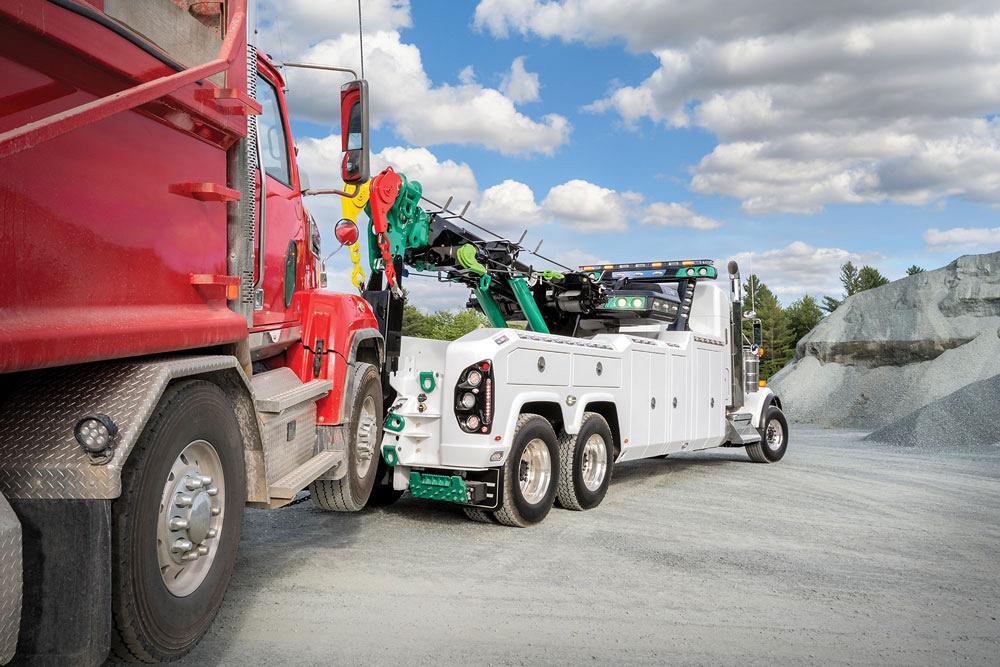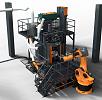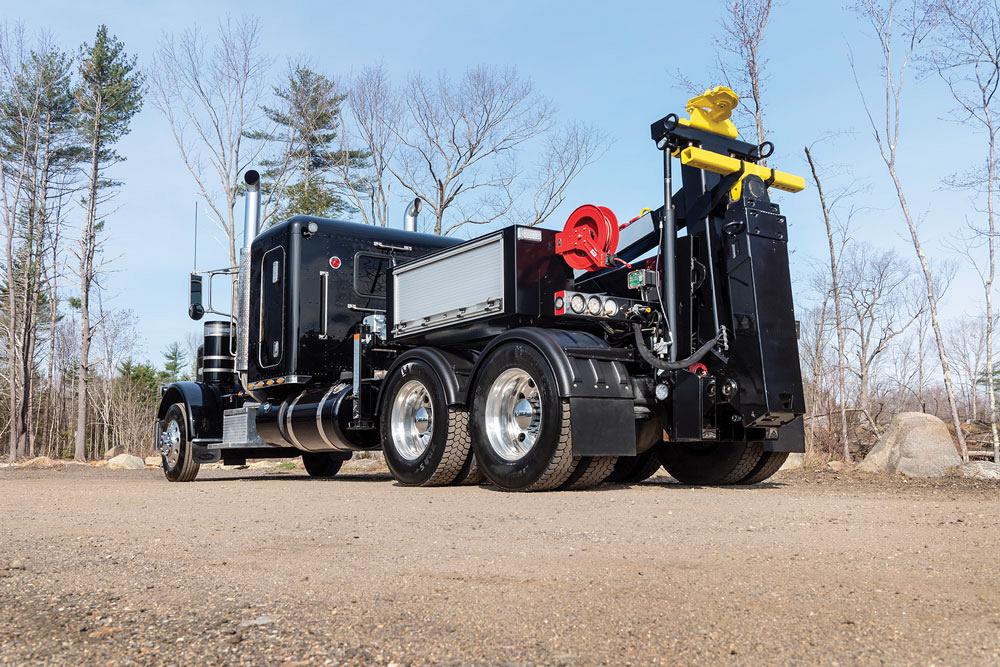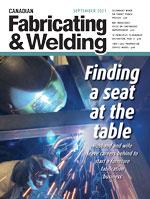Associate Editor
- FMA
- The Fabricator
- FABTECH
- Canadian Metalworking
NRC Industries focuses on continuous improvement
With two new press brakes, towing equipment manufacturer reimagines its workflow
- By Lindsay Luminoso
- September 22, 2021
- Article
- Fabricating

NRC Industries’ Canada-made tow trucks can be found all over the world. The company has a global network of dealers and sees the demand for top-quality towing equipment continuing to grow. Images: Sonya Messier/Mayacom
NRC Industries was born out of the idea that continuous improvement leads to innovation. In 1965 Norbert Pigeon founded the small shop on his family farm in Sainte-Madeleine, Que. At the time Pigeon offered general welding along with truck box manufacturing services. Over the course of a decade Pigeon focused on the future of hydraulic machinery, developing his first patent for a hydraulic underlift system that can be fixed under a car for towing. This innovation helped spark Pigeon’s ambition to create a line of towing and recovery equipment.
Today the company has grown out of the small workshop and now employs more than 160 people at a 152,000-sq.-ft. facility in Saint-Paul-d’Abbotsford, Que., and there’s an expansion facility in the works. And 50 years later Pigeon still remains a driving force at the company.
"Norbert Pigeon really wants to bring more innovation to the table and offer the best product possible for the customers," said Charles Bolduc, operations and logistics project manager. "We offer highly customizable lines of towing equipment that we have continually evolved over the years to incorporate the latest technology. Each year our engineering department looks for new ways to enhance our trucks. Innovation has been part of the fabric of NRC Industries from the start, and it gives us that competitive advantage in the market today."
Today the company produces a yearly average of more than 600 equipment systems divided in three different lines all related to the towing and recovery industry. Within these three lines are a number of different product configurations. And all equipment is made to order to customer specifications.
And while innovation is key to NRC’s success, so is its ability to manufacture its products in-house. Production, assembly, and everything in between are done at its facility, and the company has focused on minimizing what it subcontracts out, giving it a better handle on time management and quality control.
Made to Order
The shop is divided into four departments: metalworking, welding, assembly, and commercial bodywork/paint. Once a customer builds the specifications and purchases a product via a local dealer using a web configurator, a quote gets sent out and an order is generated. This is all directly linked to NRC’s enterprise resource planning system to ensure that material is available, and all specifications can be met. Once the project is scheduled, it follows a similar manufacturing workflow to all of the shop’s products.
Production begins in the metalworking department where all machining, laser and plasma cutting, bending, band saw cutting, and similar processes are completed. From there, the individual components are sent to the welding department, where all pieces are joined together. Currently the shop is building a new robotic weld cell to help improve and automate the welding process.
After welding, the parts move to assembly, where system components are put on the truck or kitted together to be mounted on a truck elsewhere. Lastly, the equipment is transferred to the paint department, which includes a sandblast bay and three paint shops, where parts are blasted, primed, painted, finished, and washed in preparation for shipping.
Batch Manufacturing
While the company builds to order, it has also recognized the importance of batch manufacturing, particularly with its Carrier units.
"We definitely try to batch our components, roughly 10 units at the same time," said Bolduc. "We regroup the options and similar parts together. This doesn’t work for larger components like towing sliders or rotators, because they tend to be highly customizable, but for standard products, it makes sense."

With four brakes on the shop floor—three 220 ton and a 1,000 ton—the shop rearranged its physical layout to place the machines closer to the laser and plasma cutters for better workflow.
First the batch is sent for sheet cutting. Having multiple parts with common cut lines on a sheet can maximize material usage. Once cut, the parts are sent for bending on press brakes.
"Batch bending is a great way to maximize machine usage," said Bolduc. "If we can produce the same bend on 10 of the components, then it minimizes the need for die changeovers and it also makes it easier for the operator to follow the workflow and keep parts running down the line efficiently."
Press Brake Management
While batch manufacturing certainly streamlined some operations, NRC has focused on optimizing its press brakes. With four brakes on the shop floor—three 220 ton and a 1,000 ton—the shop rearranged its physical layout to place the machines closer to the laser and plasma cutters.
"We wanted to eliminate or at least minimize the manual movement of material and components," said Bolduc. "The sheet metal cutting and bending areas are only a few metres away, which makes the area much more efficient."
Right now the shop primarily uses the older 1,000-ton press brake for large, simple parts. If a part requires a 90-degree bend, it ends up on this press. However, more complex components are bent on the shop’s two new LVD ToolCell 220-ton press brakes.
"One of the main reasons we went with these machines is that they offered features that would help with the press brake strategy we wanted," said Bolduc. "The programming software makes it so easy for the engineering department to develop programs. Right now we have about 5,000 programs in the database with approximately 100 new ones a week being added. So it’s really easy to maximize a workflow because we batched the parts together and are not bending single parts. This makes it easy for the operator to just go into the database and select the right program, which provides a simulation, and he can double-check everything as he sees every bend. It’s really easy for him to keep it going and utilize that machine as much as possible. Everyone knows when the machine is changing dies or when it’s not bending parts, it’s a waste of time. We have to maximize the utilization of our press brakes."
Another really important feature for NRC is LVD’s EasyForm, which is a laser tool that ensures the correct angle for every bend. If the bend is set for 90 degrees but the brake produces an 87-degree angle, it can adjust the brake to get that accurate bend.
"So once the part is bent by the ToolCell brake, we know that the quality of the part is good and the angles are right, regardless of the thickness, quality, material type. That is so important and helps reduce the amount of waste we have. The second feature that has significantly improved our press brake strategy is the auto-mated tool loading and unloading, meaning that dies can be changed quickly and efficiently. With the LVD ToolCell, it can change over in a matter of seconds without any operator interference or machine downtime."
The shop has spent decades ensuring it has modern equipment with the latest features. As it pushes to bring more work in-house, the new LVD press brakes ensure that all bending can be done by the shop.
"Anything that goes on the units, we can bend them in-house," said Bolduc. "Right now the 220-ton machines are bending ½-in.-thick 44W steel, while the largest press brake bends ⅝-in.-thick material. The press brake is capable of more, but for our needs we stop at this ⅝-in. thickness. And we work with a variety of different types of steel and aluminium."

Right now the shop has about 5,000 programs in LVD ToolCell’s database, with approximately 100 new ones added per week. The software helps maximize workflow because parts can be batched together, it provides a simulation, and the operator can see every bend.
Future Success
When Pigeon set out to create a line of towing equipment, he believed that innovation and modernization would help drive the company to success. Over the last 50 years the company has continually grown and added not only to its product line but to its in-house equipment.
"It’s been a really good few years, and we have a good future ahead of us," said Bolduc. "And now we are investing in a new, 100,000-sq.-ft. facility that will be built within the next three years, and we expect our production to increase. And with that we’ll keep modernizing our equipment. We will keep buying the latest equipment and bringing innovation to the table, and that way we can offer the best products possible for our customers."
NRC Industries’ Canada-made tow trucks can be found all over the world. The company has a global network of dealers and sees the demand for top-quality towing equipment continuing to grow. Next time you are driving down the road and see a tow truck, or flip on the show "Heavy Rescue 401," you might just be looking at towing equipment from NRC Industries.
Associate Editor Lindsay Luminoso can be reached at lluminoso@canadianfabweld.com.
NRC Industries, nrc-industries.com
LVD Group, www.lvdgroup.com
About the Author

Lindsay Luminoso
1154 Warden Avenue
Toronto, M1R 0A1 Canada
Lindsay Luminoso, associate editor, contributes to both Canadian Metalworking and Canadian Fabricating & Welding. She worked as an associate editor/web editor, at Canadian Metalworking from 2014-2016 and was most recently an associate editor at Design Engineering.
Luminoso has a bachelor of arts from Carleton University, a bachelor of education from Ottawa University, and a graduate certificate in book, magazine, and digital publishing from Centennial College.
Related Companies
subscribe now


Keep up to date with the latest news, events, and technology for all things metal from our pair of monthly magazines written specifically for Canadian manufacturers!
Start Your Free Subscription- Trending Articles
FMA Annual Meeting: Ingenuity still key with tech innovations

Automotive industry gets back on track

The 22nd annual Great Designs in Steel symposium returns May 22

Torch made for welding thin, conductive sheet metal

Compact swing chamber shot blast machine features robotic workpiece handling

- Industry Events
Automate 2024
- May 6 - 9, 2024
- Chicago, IL
ANCA Open House
- May 7 - 8, 2024
- Wixom, MI
17th annual Joint Open House
- May 8 - 9, 2024
- Oakville and Mississauga, ON Canada
MME Saskatoon
- May 28, 2024
- Saskatoon, SK Canada
CME's Health & Safety Symposium for Manufacturers
- May 29, 2024
- Mississauga, ON Canada
















